Morphological, ecological, and molecular phylogenetic approaches reveal species boundaries and evolutionary history of Goodyeracrassifolia (Orchidaceae, Orchidoideae) and its closely related taxa
- PMID: 36761312
- PMCID: PMC9836457
- DOI: 10.3897/phytokeys.212.91536
Morphological, ecological, and molecular phylogenetic approaches reveal species boundaries and evolutionary history of Goodyeracrassifolia (Orchidaceae, Orchidoideae) and its closely related taxa
Abstract
Species delimitation within the genus Goodyera is challenging among closely related species, because of phenotypic plasticity, ecological variation, and hybridization that confound identification methods based solely on morphology. In this study, we investigated the identity of Goodyeracrassifolia H.-J.Suh, S.-W.Seo, S.-H.Oh & T.Yukawa, morphologically similar to Goodyeraschlechtendaliana Rchb.f. This recently described taxon has long been known in Japan as "Oh-miyama-uzura" or "Gakunan" and considered a natural hybrid of G.schlechtendaliana and G.similis Blume (= G.velutina Maxim. ex Regel). Because the natural hybrid between G.schlechtendaliana and G.similis was described as G.×tamnaensis N.S.Lee, K.S.Lee, S.H.Yeau & C.S.Lee before the description of G.crassifolia, the latter might be a synonym of G.×tamnaensis. Consequently, we investigated species boundaries and evolutionary history of G.crassifolia and its closely related taxa based on multifaceted evidence. Consequently, morphological examination enabled us to distinguish G.crassifolia from other closely related species owing to the following characteristics: coriaceous leaf texture, laxly flowered inflorescence, long pedicellate ovary, large and weakly opened flowers, and column with lateral appendages. Ecological investigation indicates that G.crassifolia (2n = 60) is agamospermous, requiring neither pollinators nor autonomous self-pollination for fruit set, whereas G.schlechtendaliana (2n = 30) is neither autogamous nor agamospermous but is obligately pollinator-dependent. MIG-seq-based phylogenetic analysis provided no evidence of recent hybridization between G.crassifolia and its close congeners. Thus, molecular phylogeny reconstructed from MIG-seq data together with morphological, cytological, and ecological analyses support the separation of G.crassifolia as an independent species.
Keywords: MIG-seq; chromosome; cryptic species; integrative taxonomy; phylogeny; reproductive biology; species complex.
Kenji Suetsugu, Shun K. Hirota, Narumi Nakato, Yoshihisa Suyama, Shunsuke Serizawa.
Figures

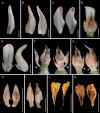
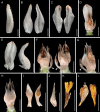
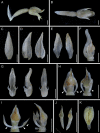
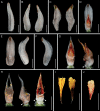

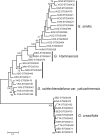


Similar articles
-
Hydroids (Cnidaria, Hydrozoa) from Mauritanian Coral Mounds.Zootaxa. 2020 Nov 16;4878(3):zootaxa.4878.3.2. doi: 10.11646/zootaxa.4878.3.2. Zootaxa. 2020. PMID: 33311142
-
Spiranthes hachijoensis (Orchidaceae), a new species within the S. sinensis species complex in Japan, based on morphological, phylogenetic, and ecological evidence.J Plant Res. 2023 May;136(3):333-348. doi: 10.1007/s10265-023-01448-6. Epub 2023 Mar 17. J Plant Res. 2023. PMID: 36930386 Free PMC article.
-
The absence of bumblebees on an oceanic island blurs the species boundary of two closely related orchids.New Phytol. 2024 Feb;241(3):1321-1333. doi: 10.1111/nph.19325. Epub 2023 Oct 17. New Phytol. 2024. PMID: 37847353
-
Orchid pollination by sexual deception: pollinator perspectives.Biol Rev Camb Philos Soc. 2011 Feb;86(1):33-75. doi: 10.1111/j.1469-185X.2010.00134.x. Biol Rev Camb Philos Soc. 2011. PMID: 20377574 Review.
-
Why are there so many bee-orchid species? Adaptive radiation by intra-specific competition for mnesic pollinators.Biol Rev Camb Philos Soc. 2020 Dec;95(6):1630-1663. doi: 10.1111/brv.12633. Epub 2020 Sep 21. Biol Rev Camb Philos Soc. 2020. PMID: 32954662 Review.
References
-
- Akiyama K. (2010) A putative hybrid between Goodyeraschlechtendaliana and G.velutina. Flora Kanagawa 71: 862–863. [In Japanese]
-
- Baldwin BG, Sanderson MJ, Porter JM, Wojciechowski MF, Campbell CS, Donoghue MJ. (1995) The ITS region of nuclear ribosomal DNA: A valuable source of evidence on angiosperm phylogeny. Annals of the Missouri Botanical Garden 82(2): 247–277. 10.2307/2399880 - DOI
-
- Bhattacharjee A, Chowdhery HJ. (2012) Notes on two species of Goodyera (Orchidaceae). Kew Bulletin 67(3): 503–510. 10.1007/s12225-012-9388-y - DOI
LinkOut - more resources
Full Text Sources
Research Materials
Miscellaneous
